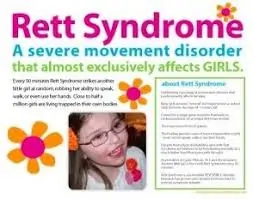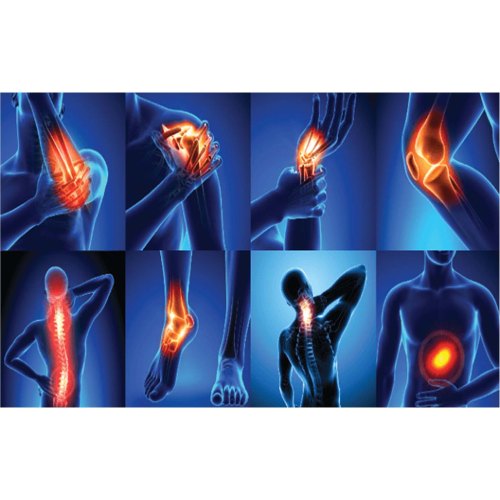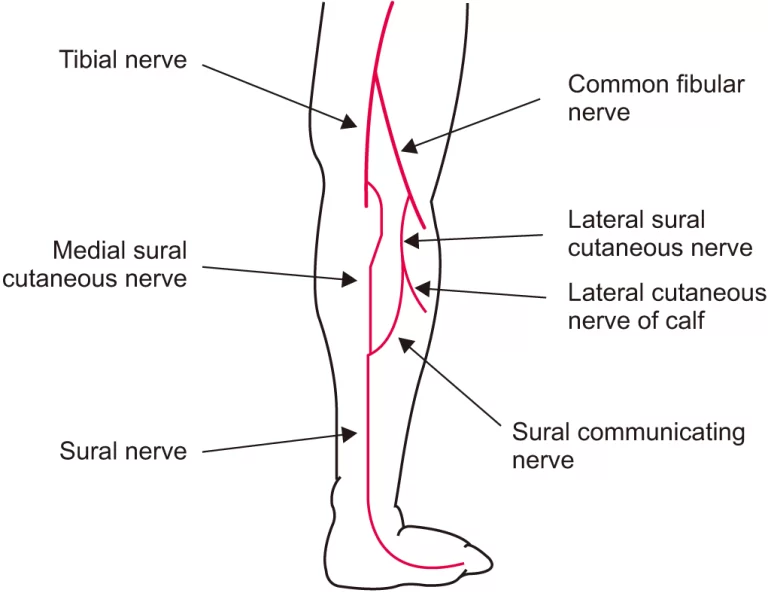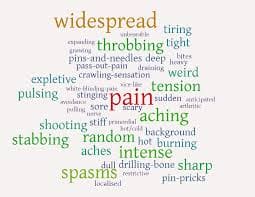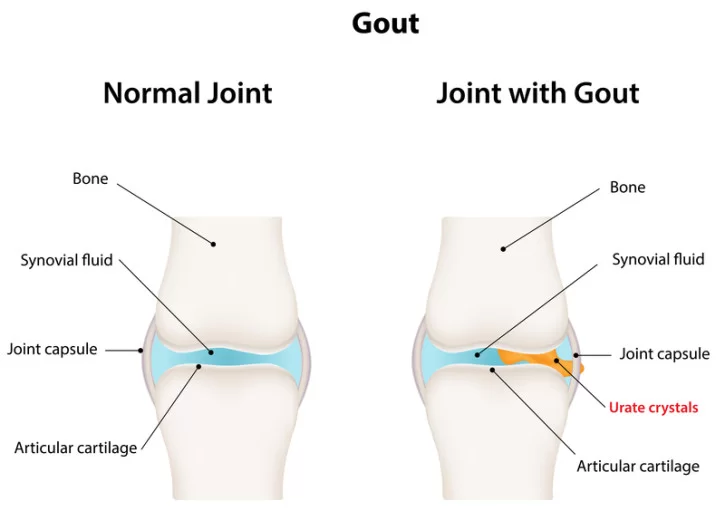Rett Syndrome
Table of Contents
What is Rett syndrome?
- Rett syndrome is a rare genetic neurological and developmental disorder that injuries the way the brain develops.
- This disorder causes a progressive loss of motor skills & language.
- Rett syndrome primarily injured females.
- Most babies with Rett syndrome appear to develop as expected for the first 6 months of life.
- These babies then lose skills they previously had — like the ability to crawl, walk, communicate or use their hands.
- Over time, children with Rett syndrome have increasing problems with the use of the muscles that control movement, coordination & communication.
- Rett syndrome can too cause seizures & intellectual disabilities.
- Unusual hand movements, like as repetitive rubbing or clapping, replace purposeful hand use.
- Although there is no cure for Rett syndrome, the potential treatments are being studied.
- Current treatment focuses on improving movement & communication, treating seizures, & providing care & support for children & adults with Rett syndrome & their families.
What are the Symptoms of Rett syndrome?
- Babies with Rett syndrome commonly are born after an uncomplicated pregnancy and delivery.
- Most infants with Rett syndrome seem to grow and behave as expected for the first 6 months.
- After that, signs & symptoms start to appear.
- The most pronounced changes generally happen at 12 to 18 months of age, over a period of weeks or months.
- Symptoms & their severity vary greatly from child to child.
The main signs & symptoms include:
- Slowed growth.
- Brain growth slows after birth.
- Smaller than common head size (microcephaly) is sometimes the first sign that a child has Rett syndrome.
- As children get older, there is delayed growth in other portions of the body.
- Loss of movement & coordination abilities.
- The first signs often include reduced hand control & a decreasing ability to crawl or walk.
- At first, this loss of abilities happens rapidly, and then it continues more gradually.
- Eventually, muscles become weak or stiff, with unusual movement & positioning.
- Loss of communication abilities.
- Children with Rett syndrome usually begin to lose the ability to speak, make eye contact & communicate in other ways. They may suit disinterested in other people, toys & their surroundings.
- Certain children have rapid changes, like a sudden loss of language.
- Over time, children may gradually regain eye contact & develop nonverbal communication skills.
- Unusual hand movements.
- Children with Rett syndrome usually develop repetitive, purposeless hand movements, which vary from child to child.
- Hand movements may involve hand-wringing, squeezing, clapping, tapping, or rubbing.
- Other signs and symptoms can involve:
Unusual eye movements: Children with Rett syndrome tend to have unusual eye movements, like as intense staring, blinking, crossed eyes, or closing one eye at a time.
Breathing problems: These involve breath holding, rapid breathing (hyperventilation), forcefully blowing out air or saliva, and swallowing air. These problems tend to happen during waking hours. Other breathing disturbances such as shallow breathing or short periods of stopping breathing (apnea) can happen during sleep.
Irritability and crying: Children with Rett syndrome may suit increasingly agitated & irritable as they get older. Periods of crying or screaming may begin suddenly, for no apparent reason, & last for hours. Certain children may experience fears and anxiety.
Other unusual behaviors: These may involve, for example, sudden, odd facial expressions and long bouts of laughter, hand licking, and grasping of hair or clothing.
Intellectual disabilities: Loss of skills may be connected to losing the ability to think, understand & learn.
Seizures: Most people who have Rett syndrome experience seizures at a certain time during their lives. Multiple seizure types may happen and are associated with changes on an electroencephalogram (EEG).
Sideways curvature of the spine (scoliosis): Scoliosis is usual with Rett syndrome. It typically begins between eight and eleven years of age and progresses with age. Surgery may be required if the curvature is very bad.
Irregular heartbeat: This is a life-threatening problem for many children and adults with Rett syndrome & can result in sudden death.
Sleep disturbances: Problems with sleep patterns can involve irregular sleep times, falling asleep during the day & being awake at night, or waking in the night with crying or screaming.
Other symptoms: A variety of other symptoms can happen, like a decreased response to pain; small hands & feet that are usually cold; problems with chewing & swallowing; problems with bowel function; & teeth grinding.
Stages of Rett syndrome
Rett syndrome is commonly divided into four stages:
Stage 1:
- Early onset.
- Signs & symptoms are subtle and easily overlooked during the first stage, which starts between the 6 and 18 months of age.
- Stage one can last for a few months or a year.
- Babies in this stage may show less eye contact & start to lose interest in toys.
- They may too have delays in sitting or crawling.
Stage 2:
- Rapid deterioration.
- Starting between one & four years of age, children lose the ability to perform skills they previously had.
- This loss can be rapid or more gradual, happening over weeks or months.
- Symptoms of Rett syndrome happen, like slowed head growth, abnormal hand movements, hyperventilating, screaming or crying for no apparent reason, problems with movement & coordination, and a loss of social interaction & communication.
Stage 3:
- Plateau.
- The third stage commonly begins between the ages of 2 and 10 years, and it can last for many years.
- While problems with movement continue, behavior may slightly improve, with less crying and irritability, & there may be a certain improvement in hand use & communication.
- Seizures may begin in this stage and generally do not happen before the age of 2.
Stage 4:
- late motor deterioration.
- This stage commonly begins after the age of 10 and can last for years or decades.
- It is marked by reduced mobility, muscle weakness, joint contractures & scoliosis.
- Understanding, communication & hand skills generally remain stable or improve slightly, and seizures may happen less often.
What are the Causes of Rett syndrome?
- Rett syndrome is a low prevalence genetic disorder.
- Classic Rett syndrome, as well as several variants (atypical Rett syndrome) with milder or more severe symptoms, happen based on several specific genetic changes (mutations).
- The genetic changes that cause Rett syndrome to happen randomly, commonly in the MECP2 gene.
- Very less cases of this genetic disorder are inherited.
- The genetic changes seem to result in problems with the protein production critical for the brain
- However, the exact cause is not easily understood & is still being studied.
Rett syndrome in males
- Because males have various chromosome combinations from females, males who have the genetic changes that cause Rett syndrome are affected in devastating ways.
- Most of them die in previous birth or in early infancy.
- A very small number of males have a various genetic change that results in a less destructive form of Rett syndrome.
- Similar to females with Rett syndrome, these males are likely to live to adulthood, yet they are still at risk of a number of intellectual and developmental problems.
What are the Risk factors?
- Rett syndrome is low prevalence.
- The genetic changes known to cause the disease are random, & no risk factors have been identified.
- In a very less number of cases, inherited factors — for instance, having close family members with Rett syndrome — may play a role.
What are the Complications of Rett syndrome?
Complications of Rett syndrome involve:
- Sleep problems that cause significant sleep disruption to the person with Rett syndrome & family members.
- Difficulty eating leads to poor nutrition & delayed growth.
- Bowel and bladder problems, like as constipation, gastroesophageal reflux disease (GERD), bowel or urinary incontinence, and gallbladder disease.
- Pain that may accompany problems like gastrointestinal issues or bone fractures.
- Muscle, bone & joint problems.
- Anxiety & problem behavior may hinder social functioning.
- Needing lifelong care & assistance with activities of daily living.
- Shortened life span.
- While most people with Rett syndrome live into adulthood, they may not live as long as the average person because of heart problems & other health complications.
How to Prevention of Rett syndrome?
- There is no known way to cure Rett syndrome.
- In most cases, the genetic changes cause the disorder to happen spontaneously.
- Even so, if you have a child or other family member with Rett syndrome, you may want to ask your health care provider about genetic testing & genetic counseling.
How to Diagnose Rett Syndrome?
- Diagnosing Rett syndrome involves careful observation of your child’s growth & development & answering questions about medical & family history.
- The diagnosis is commonly considered when slowing of head growth is noticed or loss of skills or developmental milestones occurs.
- For a diagnosis of Rett syndrome, other conditions with the same symptoms must be ruled out.
- Evaluating other causes for the symptoms.
- Because Rett syndrome is rare, your child may have some tests to determine whether other conditions are causing some of the same symptoms as Rett syndrome.
Certain of these conditions include:
- Other genetic disorders
- Autism spectrum disorder
- Cerebral palsy
- Hearing or vision problems
- Metabolic disorders, such as phenylketonuria (PKU)
- Disorders that cause the brain or figure to break down (degenerative disorders)
- Brain disorders caused by trauma or infection
- Brain damage before birth (prenatal).
What tests your child requires depends on specific signs & symptoms.
Tests may include:
- Blood tests
- Urine tests
- Imaging tests like as magnetic resonance imaging (MRI) or computerized tomography (CT) scans
- Hearing tests
- Eye and vision exams
- Brain activity tests (electroencephalograms, also called EEGs)
- Core symptoms.
Diagnosis of classic Rett syndrome includes these core symptoms, which may start to show up anytime from six to 18 months of age:
- Partial or full loss of purposeful hand skills,
- Partial or complete loss of spoken language,
- Walking problems, like as difficulty walking or not being able to walk,
- Repetitive purposeless hand movements, like as hand-wringing, squeezing, clapping or tapping, putting hands in the mouth, or washing & rubbing movements,
- Additional symptoms that typically happen with Rett syndrome can support the diagnosis.
- Guidelines for diagnosis of atypical Rett syndrome may vary slightly, yet the symptoms are the same, with varying degrees of severity.
Genetic testing
- If your child’s health care provider suspects Rett syndrome after the evaluation, genetic testing (DNA analysis) may be required to confirm the diagnosis.
- The test needs drawing a less amount of blood from a vein in your child’s arm.
- The blood is then sent to a lab, where the DNA is examined for hints about the cause & severity of the disorder.
- Testing for the changes in the MEPC2 gene confirms the diagnosis.
- Genetic counseling can assist you in understanding gene changes & their effects.
- CT scan,
- EEG (electroencephalogram),
- Eye exam.
What is the Treatment of Rett syndrome?
- Although there is no prevention for Rett syndrome, treatments address symptoms & provide support.
- These may improve the potential for movement, communication & social participation.
- The need for treatment and support does not end as children become older — it is commonly necessary throughout life.
- Treating Rett syndrome requires a team approach.
Treatments that can assist children and adults with Rett syndrome include:
- Regular medical care: Management of symptoms & health problems may require a multispecialty team. Regular monitoring of physical changes like scoliosis, gastrointestinal (GI) issues & heart problems is needed.
Medications: Though medications can not cure Rett syndrome, they may assist in controlling some signs & symptoms that are part of the disorder. Medications may assist with seizures, muscle stiffness, or problems with breathing, sleep, the GI tract, or the heart.
Physical therapy: Physical therapy & the use of braces or casts can help children who have scoliosis or require hand or joint support. In certain cases, physical therapy can also help maintain movement, create a proper sitting position, & improve walking skills, balance, and flexibility. Assistive devices like a walker or wheelchair may be helpful.
What is the physiotherapy treatment for Rett syndrome?
- Your doctor might suggest this type of treatment if you have had an injury or illness that makes it hard to do daily tasks.
- Physical therapy treatment is care that aims to relieve pain & help to improve your function, move, & live better.
You may require it to:
- Relieve pain
- Improve movement or ability
- Prevent or recover from a sports injury
- Prevent disability or surgery
- Rehab after a stroke, accident, injury, or surgery
- Work on balance to prevent a slip or fall
- Prevent a chronic illness like diabetes, heart disease, or arthritis
- Recover after you give birth
- Control your bowels or bladder
- Adapt to an artificial limb
- Grasp to use assistive devices like a walker or cane
- Get a splint or brace.
- People of all ages benefit from physical therapy.
- It can treat a variety of health problems.
What Does a Physiotherapist Do?
- At your first therapy session, your PT will examine & assess your needs.
- They will ask you questions about your pain or other symptoms, your ability to move or do everyday tasks, how well you sleep, & your medical history.
- The objective is to determine a diagnosis of your condition, why you have the condition, involving impairments that either caused or are a result of the condition, and then develop a plan of care to address each.
The physiotherapist will administer tests to measure:
- How well you can proceed around, reach, bend, or grasp,
- How well you walk or climb steps,
- Your heartbeat or rhythm while active,
- Your posture or balance.
- Then, they will work with you to produce a treatment plan.
- It will involve your personal goals like functioning and feeling better, plus exercises or other treatments to assist you in reaching them.
- You may take less or more time to reach those goals than other people in physical therapy. Everyone is different.
- You may have more or fewer sessions than others.
- It just depends on your needs.
Your treatments might involve:
- Exercises or stretches guided by your therapist,
- Massage, heat, or cold therapy, warm water therapy, or ultrasound to relieve muscle pain or spasms,
- Rehab to assist you to learn to use an artificial limb,
- Practice with gadgets that assist you to move or stay balanced, like a cane or walker,
- Your therapist will see your progress and adjust your treatments as necessary.
- You can do the exercises your therapist teaches you at home during the sessions.
- This will assist you in staying on track and improving your fitness.
- Rett syndrome is characterized by neuromuscular limitations that need active therapeutic intervention.
- Moreover, physical therapy is the main part of the management of the disorder as it aims to maximize & maintain the function of persons with Rett syndrome.
- Target areas of treatment in persons with Rett syndrome involve low cardiovascular capacity, uncoordinated movements (ataxia), bony deformities (spine, peripheral extremities) & spatial disorientation.
- Physiotherapy aims to improve or maintain mobility & balance, prevent or lessen bony deformities, & ultimately improve independence.
Given the big variability among persons with Rett syndrome, certain physiotherapy goals that may be appropriate for a majority of this population include (but are not limited to):
- Improve mobility & posture & reduce tone (improves feeding abilities),
- Reducing apraxia between repetitive functional movements/activities,
- Increase cardiovascular fitness,
- Restoring hand use (hand splints, fine motor activities),
- Enhance coordination & balance through practice in different situations and environments,
- Improve body awareness through proprioceptive training,
- Other therapies involve hydrotherapy and hippotherapy.
- In the 2001 case report by Yasuhara et al., thirty-minute private sessions of active music therapy were used to treat 3 children with RTT.
- At the end of the treatment, patients appeared
- A certain degree of mental and physical development,
- improvement of the purposive hand use,
- development of language comprehension.
Certain considerations with treatment:
- Individuals with Rett syndrome experience daily fluctuations in mood & function.
- Therefore, the intervention plan should be flexible & constantly adjusted to the patient’s state.
- Therapists should practice good follow-up routines regarding the client’s status & adjust interventions as needed.
- Therapy goals (intensity & pace of treatments) should be adjusted according to the reaction of the patient,
- Foster elements of independence by enabling the patient to have control & choice in activities,
- There is no optimal time frame to start the physiotherapy (the earlier the better),
- Systematic review infers a multimodal individualized physical therapy program should be prescribed to patients with Rett syndrome to prevent autonomy & improve quality of life.
- But, further high-quality studies should be carried out to confirm the findings.
- Overall, the literature suggests that preventative approaches undergoing functional therapy with a multidisciplinary team should be adopted to maintain & maximize the abilities of persons with Rett syndrome.
Occupational therapy: Occupational therapy may improve purposeful use of the hands for activities such as dressing & feeding. If repetitive arm & hand movements are a problem, splints that restrict elbow or wrist motion may be helpful.
Speech-language therapy: Speech-language therapy can assist in improving a child’s life by teaching nonverbal ways of communicating & helping with social interaction.
Nutritional support: Proper nutrition is extremely important for healthy growth & for improved mental, physical & social abilities. A high-calorie, well-balanced diet may be recommended. Feeding strategies to prevent choking or vomiting are important. Certain children and adults may need to be fed through a tube placed directly into the stomach (gastrostomy).
Behavioral intervention: Practicing & developing good sleep habits may be helpful for sleep disturbances. Therapies may assist in improving problem behaviors.
Support services: Early intervention programs & school, social, and job-training services may assist with integration into school, work, and social activities. Certain adaptations may make participation possible.
Alternative medicine
A few examples of complementary therapies that have been tried in children with Rett syndrome include:
- Music therapy
- Massage therapy
- Hydrotherapy, which includes swimming or moving in water
- Animal-assisted therapy, like as therapeutic horseback riding
- Adapted sports & recreational activities.
- Although there’s relatively less evidence that these approaches are effective, they may offer opportunities for increased movement & social & recreational enrichment.
- If you think alternative or complementary therapies might assist your child, talk to your health care provider or therapist.
- Discuss the possible benefits & risks and how the approach might fit into the medical treatment plan.
Coping and support
- Children & adults with Rett syndrome need help with most daily tasks, such as eating, walking, and using the bathroom.
- This constant care & disturbed sleep can be exhausting and stressful for families and can impact the health & well-being of family members.
To better cope with the challenges:
Find ways to relieve stress:
- It’s natural to feel overwhelmed at times.
- Talk about your problems with a trusted friend or family member to help relieve your stress.
- Take some time for yourself and do something that you enjoy so you can relax.
Arrange for outside help:
- If you care for your child at home, seek the help of outside caregivers who can give you a break from time to time.
- Or you may consider residential care at a certain point, especially when your child becomes an adult.
Connect with others:
- Getting to know other families facing problems similar to yours can help you feel less alone.
- Look for online support and information from organizations like as the International Rett Syndrome Foundation.
Preparing for your appointment
- Your child’s health care provider will look for developmental problems at regular checkups.
- If your child shows any signs or symptoms of Rett syndrome, you may be referred to a pediatric neurologist or developmental pediatrician for testing and diagnosis.
- Here’s certain information to help you get ready for your child’s appointment.
- If possible, lead a family member or friend with you.
- A trusted companion can help you remember information & provide emotional support.
What can you do?
Before your appointment, make a list of:
- Any unusual behavior or other signs: Your health care provider will examine your child carefully & check for slowed growth and development, but your daily observations are very important.
- Any medications that your child takes: Include any vitamins, supplements, herbs & nonprescription medicines, and their dosages.
- Questions to ask your child’s health care provider: Be sure to ask questions when you do not understand something.

